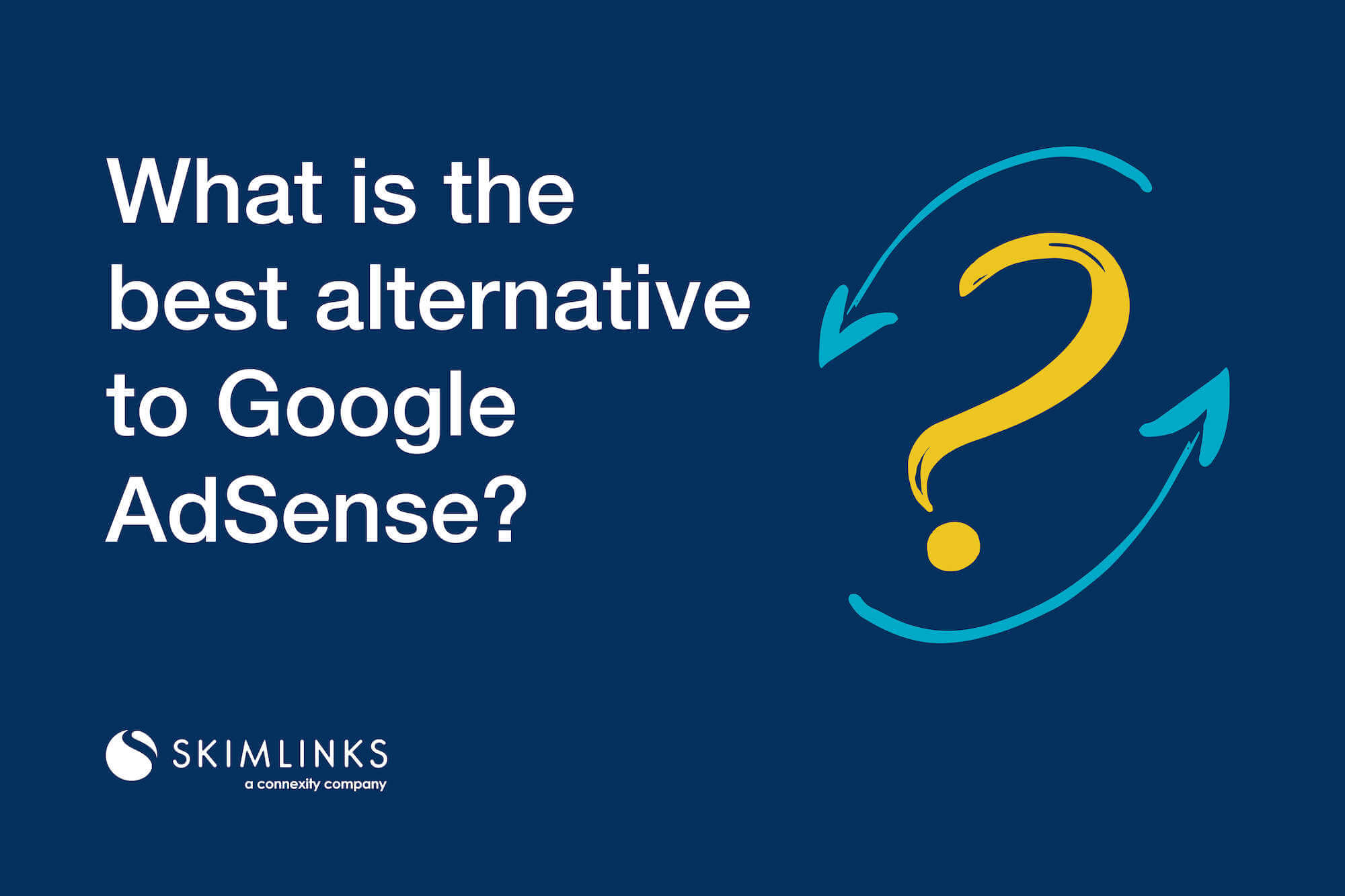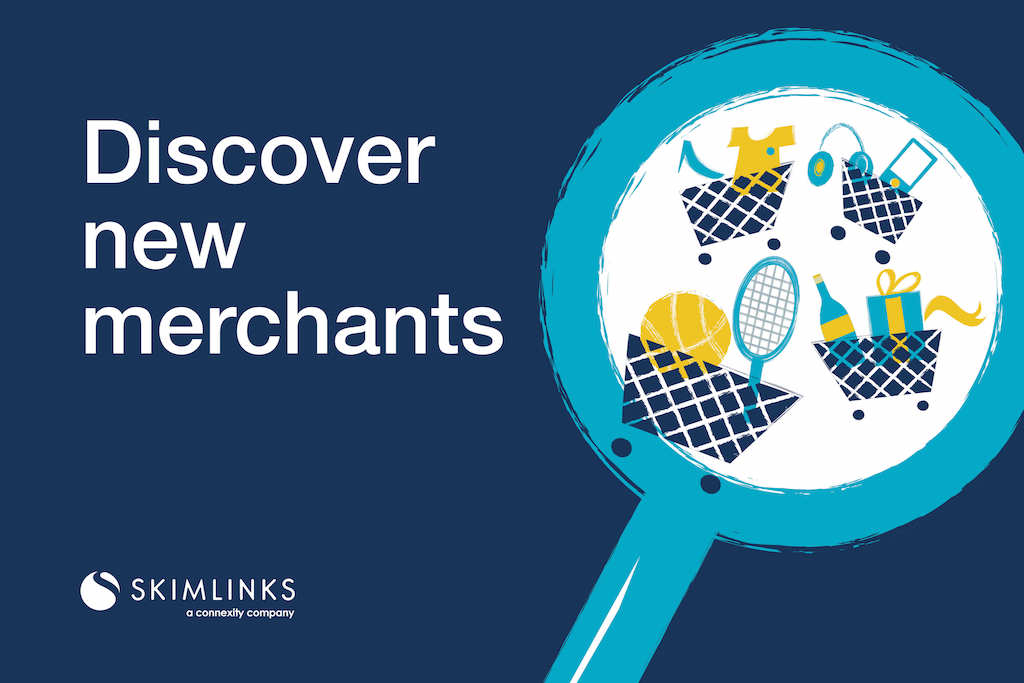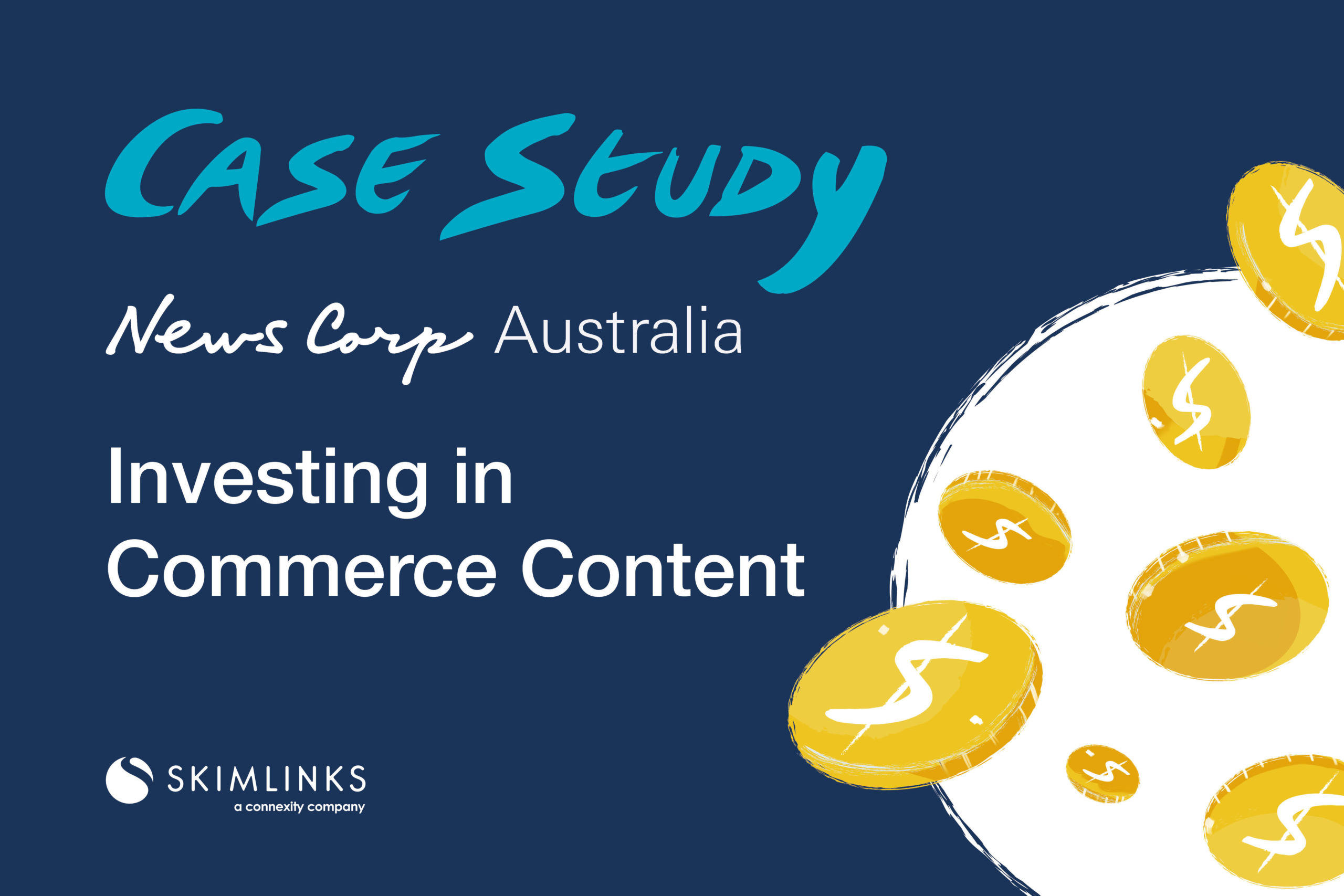What is the Best Alternative to Google AdSense?
Posted 3 years ago by Tyra Brown

Google AdSense is used by 38.3 million websites across the world and has been chosen by publishers for the following reasons:
- There are a lot of publishers and advertisers on AdSense
- A vast range of ad formats (text, images, GIFs, HTML5, and videos) and in various sizes
- High level of security and transparency as Google acts as an intermediary between merchants and publishers, and there is a lot of data available to monitor performance in Google Analytics
However, growing concerns on privacy, ad quality, use of ad blockers or simply more focus on user experience has led publishers to look for alternatives.
Skimlinks is one of them.
In this article, we’ll compare and explain how publishers can use Skimlinks instead of, or alongside Google AdSense, to increase and diversify their revenue.
What is Google AdSense?
AdSense is a platform built and managed by Google that allows publishers to serve text, image, video, or interactive media advertisements that are tailored to the content and audience of their sites. Google is in charge of administering, sorting and sustaining these ads.
In other words, Google created AdSense for publishers to have an easy way to make money by showing ads alongside their online content.
It’s free for publishers to sign up to Google AdSense, and once approved, publishers will get paid every time readers click on an ad.
How is Skimlinks different from Google AdSense?
Skimlinks is a content monetization platform made specifically to help publishers increase their revenue with affiliate marketing.
By installing the Skimlinks Javascript on their site, publishers can use Skimlinks’ technology to automatically affiliate merchant links in their content.
This is made possible because merchants such as Nike, ASOS, Booking.com and 48500 other merchants created affiliate programs to give an extra incentive for publishers to promote their products.
Unlike AdSense, Skimlinks specializes in monetizing links and publishers receive commissions mainly on a Cost-Per-Sale (CPA) basis. In other words, when a reader clicks on an affiliate link and buys a product or service from the merchants, the publisher receives a commission.
How much money can I make with Google AdSense?
According to Wordstream, the average Cost-Per-Click (CPC) for AdSense display ads, across all industries, is $0.69 in the US, and the average Click-Through-Rate (CTR) is 0.57%.
Google takes a 32% commission and publishers receive the remaining 68%. This means that if a site gets 50,000 impressions per month, the potential earnings on average is:
50,000 x 0.57% = 285 clicks/month.
285 x ($0.69 x 68%) = $134/month.
Based on our calculation, a publisher with 50,000 website visits per month will make, on average, $134 per month with AdSense.
AdSense CPCs vary depending on which country or industry your site is in, some niches such as Online Dating can have CPCs going up to $1.49.
Top 10 Most Profitable Google AdSense Niches
- Dating & Personals ($1.49 CPC)
- Finance & Insurance ($0.86 CPC)
- Consumer Services ($0.81 CPC)
- B2B ($0.79 CPC)
- Employment Services ($0.78 CPC)
- Real Estate ($0.75 CPC)
- Legal ($0.72 CPC)
- Health & Medical ($0.63 CPC)
- Advocacy ($0.62 CPC)
- Home Goods ($0.60 CPC)
Source: Wordstream
How much money can I make with Skimlinks?
The earnings of publishers with Skimlinks depend on a number of factors including their traffic, vertical, Click-Through-Rate (CTR), Average Order Value (AOV), Commission Rate (CPA) and Conversion Rate (CR).
Let’s take the example of a blogger in the photography vertical that receives on average 12000 impressions annually per article and an average CTR of 2%.
This photography blogger might have links to merchants who sell cameras (Canon or B&H Photo Video for example), and with a 2% CTR, one article with 12000 impressions per year could be sending 240 clicks per year to these camera merchants.
Now let’s imagine these merchants’ affiliate programs have an average CPA of 6%, an AOV of $260 and an average CR of 2%. This would mean that the potential earnings of this blogger would be:
(240 x 2%) x ($260 x 6%) = $74.90
This is the formula I used to calculate this: (Clicks x CR) x (AOV x CPA).
Therefore based on this formula, a blogger in the photography vertical could potentially make $74.90 dollars per article per year. Depending on the size of the blog, here is the potential earnings of this blogger based on the number of blogs published:
- 50 blog posts = $3744 per year
- 100 blog posts = $7488 per year
- 250 blog posts = $18720 per year
As you can see, the more blog posts you have, the more money you will make with Skimlinks. Therefore, make sure to set yourself a realistic target each month to produce as many blog posts as possible. You can write these yourself or use platforms such as Fiverr or Upwork to hire freelance bloggers to do it for you.
Keep in mind that the blog posts you publish this year will potentially become a source of traffic for a couple of years. That means that if you publish 100 blogs each year for 5 years, you could be earning revenue from 500 blogs, so an estimated $37k from Skimlinks on year 5.
Skimlinks CPAs vary depending on which country or industry your site is in. Some niches such as Arts & Crafts can have an average CPA of 10-15%.
Top 10 Most Profitable Skimlinks Niches
- Arts & Crafts (10-15% CPA)
- Fitness Products and Services (9-14% CPA)
- Personalised Gifts (9-14% CPA)
- Women’s Fashion (8-13% CPA)
- Cosmetics (8-13% CPA)
- Men’s Fashion (7-12% CPA)
- Travel (7-12% CPA)
- Furniture (7-12% CPA)
- Nails and Nail Care (7-12% CPA)
- Rented Holiday Accommodation (5-10% CPA)
Skimlinks VS AdSense
Does Skimlinks pay more than Google AdSense?
It depends on the vertical. It’s likely that AdSense may bring in more revenue for articles about Dating, Finance, or Insurance. However, for verticals such as Arts & Crafts, Fitness, Gifts, or Fashion, it’s more likely that Skimlinks will have a higher payout to publishers.
Is Skimlinks more profitable than Google AdSense?
Skimlinks is not necessarily better than AdSense as it depends on what vertical your site is in, and what type of content you are focusing on. For example, if most of your site’s content is covering news stories or educational content, you may find that AdSense will perform better than Skimlinks. On the other hand, if you have a lot of commerce content (content that is linking to merchant products and services) and merchant links, then Skimlinks is much more likely to outperform AdSense in terms of profitability.
What is the main benefit of using Skimlinks compared to Google AdSense?
In my opinion, one of the main benefits of using Skimlinks instead of Google AdSense to monetize your site is User Experience.
Google AdSense is easy to set up and does not require a lot of work, but the Google ads that will show on your website, as a result, can harm the user experience by showing inappropriate or distracting content, and by causing to slow down your site (which can also harm your SEO at the same time).
When using Skimlinks, your readers will not see any annoying ads, and publishers have full control over the brands displayed on their websites. Plus, there is no added load time so your SEO rankings won’t take a hit.
Can Google AdSense and Skimlinks work together?
Google AdSense and Skimlinks can definitely be used together at the same time. Publishers can use both solutions at the same time because they are not found in the same place on a web page. Skimlinks links are placed within the text of website pages, and AdSense banners appear alongside the actual content.
To sum up, Skimlinks is a great option for publishers looking to diversify and increase their revenue.
Because they are different solutions, Skimlinks can be used in conjunction with AdSense. However, a good test idea would be to replace your AdSense banners with your own banners or those of merchants and putting a clickable affiliate link within the image.
I suggest trying this approach with pages that are already performing well with Skimlinks.
For example, if you have published a review of a MasterClass course and it’s performing well, you could test adding MasterClass banners (with a special offer if there is one!) on the sides of the article.
You may find that this will bring in more extra revenue than AdSense for that specific page. If it works on this page, keep testing on other pages to optimize and grow your revenue.
Go ahead and test both solutions and ideas for yourself! I’d love to hear your results, you can let me know on Twitter how you get on with both Skimlinks and AdSense. 🙂
Bonus:
Top tips to make more money with Skimlinks
- Write great commerce content
- Optimize your content for SEO and make sure you can rank in position 1-3
- Write about merchants/verticals with a high total commissions volume or EPCs
- Test different Call-To-Actions (CTAs) such as images, banners, buttons or popups
- Try replacing AdSense banners with your own banners with affiliate links in them
- Test monetizing different channels such as Social Media and Email Marketing


